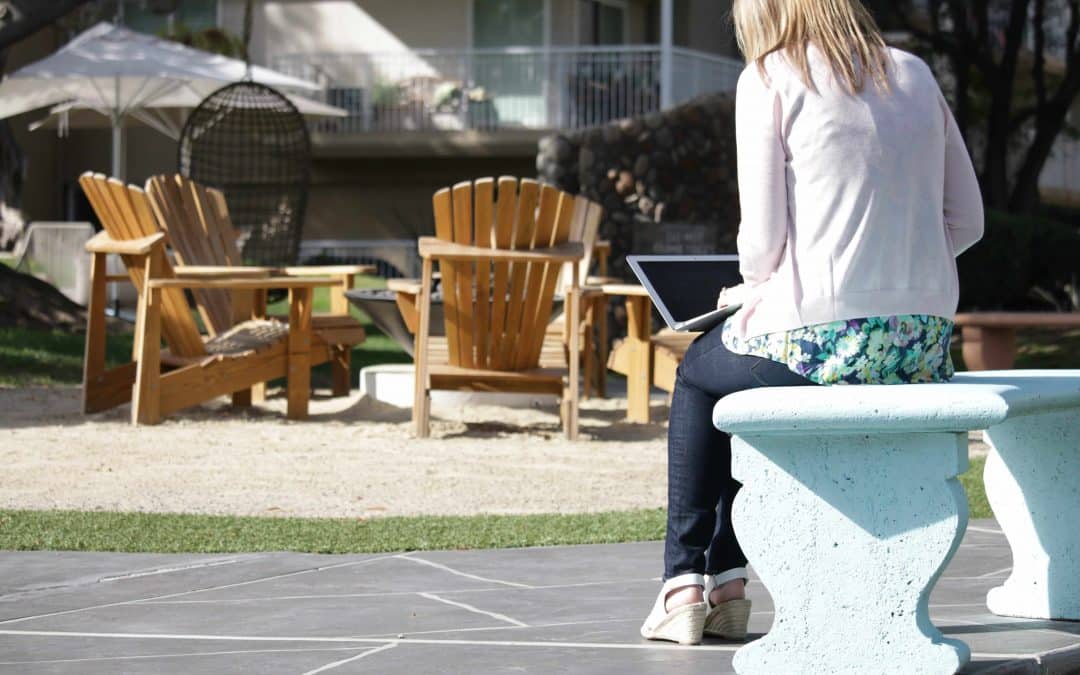Quick note from Anna: Happy birthday to my dad! Without my dad’s encouragement, I never would have went back to get my MBA. Thanks dad!
Tips from a Grad School Student: The “Official Guide” to the MBA
If you are applying to business school this year or someday want to get your MBA, don’t miss this post! Prarthana Srikanth is a Classy Career Girl reader and a soon to be a full time MBA student at the Rady School of Management at University of California, San Diego in the Fall. Since I recently graduated from the Rady School, I was so happy to meet Prarthana for coffee one day. She read my blog and reached out to me to get my advice on the MBA program. Good luck Prarthana with your MBA and thank you for sharing your advice!
I always wanted to get an MBA…but resisted the thought for a long time because of my previous job. I worked in a laboratory in academia and my responsibilities did not entail handling budgets, sales or people. When I thought of how different I would be from the other people who would be applying, I simply wanted to scramble back to the PhD option. But thanks to my family and the incredible amount of information that is available, I was able to move out of my comfort “researcher” zone and get admitted to a b-school of my choice. Today, I want to share some my tips for making your MBA application process a successful one.
1. Choose wisely
I was a Biomedical Science researcher and wanted to make the transition to the Biotechnology Industry. After exhaustive research, I found a few good schools that demonstrated a sincere interest in the advancement of the biotech industry. For instance, these schools encouraged applications from scientists and doctors (MD); they offered unique courses such as “Lab to Market” and were located close to biotech hubs. After weighing the benefits, I decided to apply to only those schools that would provide me with industry-relevant advantages (networking opportunities, health-care related case studies, interaction with recruiters and speakers from the biotech industry, etc.).
2. Volunteer work
I wanted some exposure to business development before I enrolled into an MBA program. Because of this, I joined a non-profit corporation and initiated a proposal to work on a business plan for the use of Clean/Alternative Energy in India. Later, this volunteer-opportunity supported my MBA application tremendously because it demonstrated my inclination towards business and management and it also showed that I was interested in learning about other industries outside of my job.
3. Problem Essays
Think about all the issues you had or have in your job and work from there. Identify and dissect the problem— how did you resolve it, how did you handle the stress, what resources or skills did you use in the process, what lessons did you learn from it, were others involved, how did you communicate the problem to them, how did you reach out for help, how did you muster the courage to talk to your boss about a failure, was your passion the secret behind the success? The success of your essay depends largely on the language, tone and also how well you know your school. Read 2-3 sample essays but ultimately come back to what is your own. Find your way of generating ideas. I always kept my iPhone next to me to jot down ideas so I wouldn’t forget them (even if it was at 4am).
4. Get organized
I used technology and cloud computing services to work efficiently. I used Google calendar to send me reminders and Google docs to write my essays. This way I could access them from anywhere and edit them real-time with my essay reviewers. I downloaded all the necessary s/w such as PDF Merger, PDF Converter etc. (I was using an HP Mini) and kept a scanned version of all my documents (transcripts, passport, GMAT/TOEFL scores etc.) ready to go. I saved and categorized every page I read of innovative programs, student achievements and admission events pertaining to the respective schools. I also used a Google spreadsheet (since I was applying to ~10 schools) to store contact numbers, email addresses, deadlines, columns for tracking recommender’s progress, URLs, login ids etc.
5. You don’t have to spend a lot to get a lot
I did not spend an extra dime on my GMAT other than the exam fee. I borrowed all the study material from the community library (they have the latest so get them early!). I attended the World MBA Tour ($5 Registration Fee) and other similar MBA-fairs and got my application fee (approx. $150 each) waived for some schools. You can avail this by simply visiting the School’s booth at the event! For formal clothes, I waited (with bated breath) for my first interview letter. Once I received it, I opened all the links on Deals-Sales that I had saved. I got formal shirts for $15 each (originally $45; Van Heusen), nice low-heeled (2 ¼”) black leather pumps $30 (originally$45; DSW) and lovely formal black pants for $30 (originally $70; Groupon for Gap).
6. Ask Student Ambassadors and you shall receive
They really help! A lot in fact. Their contact address is available on the School’s website and they respond to ALL your emails. So your satisfaction depends on your question. I asked very specific questions about specific courses and therefore got extremely focused answers (which I could even use in my essays!). I even asked for interview tips because it had been two years since I had last interviewed and my previous job didn’t bust you if you wore worn-out-at-the-knee jeans to work! Some of the advice I got— Look sharp, have a USP, carry a padfolio, wear a little bit of makeup (boys— good haircut and mild cologne 😀 and smile till the end!
7. Know thyself
It is true, that you can accelerate through the essay-writing process if you really know yourself. And for this, extreme introspection is required. Be aware of your actions during the MBA application process and make a conscious note of your likes, dislikes, aspirations and pet-peeves (write down if necessary- a pen is always better than a good memory).
8. Acknowledge
I was immensely benefited by all the free and useful information I found.. I acknowledged every info session, interview, phone call and email-exchanges with a sincere thank you note. I personalized it by highlighting one memorable/positive aspect about the interaction. One last thing, to show my seriousness about the MBA and to learn more about my target b-school, I attended every class visit opportunity available, spoke to as many students as possible and made contacts and friends. Every visit, follow-up and meeting made my confidence grow by leaps and bounds.




